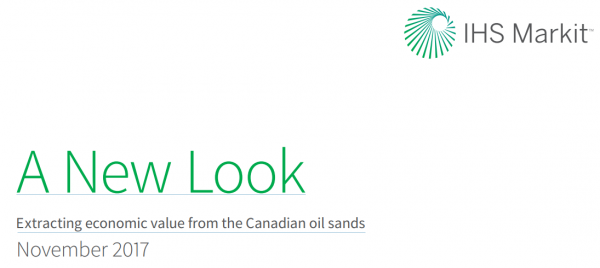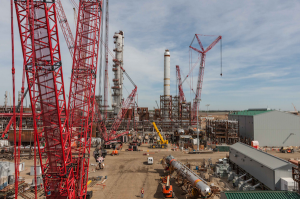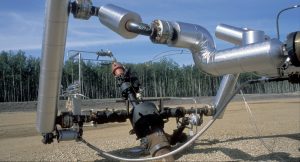More Alberta refining, upgrading of heavy crude oil is never going to be economic, but partial upgrading might be
 Full upgrading is a bust, new refineries are too risky, and converting existing refineries is constrained by US shale oil supplies
Full upgrading is a bust, new refineries are too risky, and converting existing refineries is constrained by US shale oil supplies
Albertans should stop pining for more refining and upgrading of Alberta oil sands bitumen and heavy crude oil, judging by the conclusions of a new study from IHS MarkIt. The economics simply don’t work. But there is hope on the horizon: partially upgrading bitumen to a medium or heavy crude. The technology is still five to 10 years from being commercial, but the benefits are so great that it’s time for the Alberta and Canadian governments to step up and invest in what could be a game-changer for the industry and the provincial economy.
Judging from readers’ comments on social media, Albertans still cling to the outdated notion that refining and full upgrading to a synthetic crude oil is a realistic opportunity.
Keep jobs in Alberta, they cry, don’t export them in a pipeline!
“Public interest remains for heavy oil refining and processing capacity in Western Canada,” said Kevin Birn, the IHS Markit executive director who heads the Oil Sands Dialogue. “Though the economic outlook has improved, upgrading continues to look challenged. New refineries could work under the right circumstances, but are not without risk.”
Birn, who is based in Calgary and my go to source for oil sands economics, is being polite, as A New Look: Extracting economic value from the Canadian oil sands makes clear.
The biggest constraint to new refining and upgrading capacity in Alberta is an abundance of light sweet oil from American shale basins. The US Energy Information Administration says American oil production, led by shale companies, will average 9.2MM b/d (million barrels a day) in 2017, rising to 9.9MM b/d in 2018, beating the old record set in 1970.
If you think that’s impressive, what’s literally and figuratively in the pipeline is even more alarming: by 2040 the US will be pumping 15 million boe/d, combined shale and conventional production, according to the International Energy Agency.

Sturgeon Refinery construction, probably the last refinery to be built in Alberta. The project is well behind schedule and over budget.
Birn says if there is a refining option available to Alberta it is, by far, converting existing facilities to process heavy crude, thanks to much lower capital requirements.
“The economics for refinery conversions are the most favorable of the three options reviewed in our study. But the abundance of light, tight oil diminishes the incentive for facilities to make that switch,” he said.
Upgrading remains challenged, new refineries are too risky because of the high cost, and refinery conversions aren’t attractive due to competition from American shale oil.
Alberta’s hands appear to be tied.
“The most attractive option for growing oil sands production continues to look like the export of heavy sour bitumen blends to U.S. Gulf Coast region which imported over 1.8 million b/d of crude oil of similar quality to the oil sands from offshore places like Venezuela, Mexico and others in 2016,” said Patrick Smith, the study’s co-author and a research associate at IHS Markit.
“But present conditions have oil sands producers searching for new options as well. A key area of interest is what is being called partial upgrading which seeks to improve the mobility of bitumen—reducing the need for diluent used in the creation of bitumen blends—a significant cost for the industry today.”
Enegi News has reported extensively about partial upgrading (here and here and here). There are three key benefits:
One, a financial “uplift” of $10 to $15 a barrel.
Two, the upgrade to a medium or heavy crude reduces or eliminates the need to dilute bitumen by up to 30 per cent so it will flow in a pipeline. In an ideal world, partial upgrading could free up 30 per cent of Canada’s pipeline capacity at a time when every new pipeline project is bitterly contested and subject to ever stricter climate and environmental regulation.
Three, greenhouse gas emissions are reduced by up to 17 per cent. Granted, that reduction is enjoyed by the refinery that processes the partially upgraded crude oil, but if the goal is to lower emissions and decarbonize the existing energy system, then let’s call it a win for the planet.
The School of Public Policy study that yielded the economic data above estimates a 100,000 b/d partial upgrader would cost $3 billion to $5 billion and could be built much more quickly than a refinery or full upgrader.
In short, partial upgrading is the best bet for the Alberta oil sands, which will be producing as much as 3.8MM b/d of bitumen by 2030.
I’ve completed interviews with three companies working on partial upgrading and a podcast with energy economist Kent Fellows, lead author on the School of Public Policy paper, will be posted this week.
The case for partial upgrading is getting stronger and stronger. It’s time to seriously investigate if the commercialization of the technology can be significantly sped up.
According to the IHS study, there are no other alternatives to the status quo.








